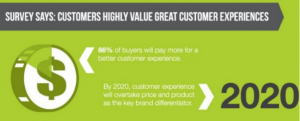 Twitter was the first social media platform that I really fell in love with. I love the simplicity of the platform, the fast-moving stream of information that I always find valuable, and the information and insights I can take away from it in just a short period of time that always help me do my job (or serve my clients) more effectively. I’m less active there than I have been in the past, but it’s still an important platform for me and my team overall, as well as for our clients.
Twitter was the first social media platform that I really fell in love with. I love the simplicity of the platform, the fast-moving stream of information that I always find valuable, and the information and insights I can take away from it in just a short period of time that always help me do my job (or serve my clients) more effectively. I’m less active there than I have been in the past, but it’s still an important platform for me and my team overall, as well as for our clients.
According to Internet Live Stats, there are some 6,000 tweets sent per second on average, which translates to over 350,000 tweets per minute or about 500 million tweets per day. That’s no small amount of tweetage. Ever wonder whether your content shared on Twitter is actually reaching your target audience or having any kind of an impact at all? If not, you should. And you can figure that out by conducting a Twitter audit. If that’s not on your plan for 2015, maybe it should be. Here’s how to do it.
What is a Twitter audit?
A Twitter audit is the process of examining your current Twitter content marketing efforts to determine if what you’re doing there is moving the needle in any way, as well as to explore areas for improvement. There are some key elements you should pay particular close attention to when you are conducting an audit, including the efficacy of your content overall, your audience, and the perception of and sentiment about your brand.
Content
An important part of your audit is a review of the content you share and an evaluation of how much engagement (or response) you are generating from it. You can always confirm this by using the Twitter built in analytics tool or, if you use a URL shortening service (and you should), check how many people shared or clicked on the links you shared.
It is also good to see what type of content resonates with your audience. Does your audience respond when you ask them a question? When you ask for opinions, does your audience interact with you? Do they comment on things that you share and engage in conversations with you? Do you initiate conversations with them, based on content they share? Does your audience share articles you post by retweeting you? Do they favorite your content? Do you get sales leads or opportunities of some nature as a result of what you’re doing on Twitter?
By being aware of what resonates with your audience, you’ll better be able to share relevant content and generate maximum engagement. All of these are important things to audit regularly, take note of and focus on moving forward.
Audience
It’s also important to truly know your Twitter community. An audit will help you understand who follows you and allow you to segment that audience into lists based on specifics that are important to you from a sales and marketing standpoint. An audit is also very important when it comes to regularly sweeping your Twitter followers and clearing out bots and undesirable followers that somehow manage to creep in when you’re not looking. There is nothing more embarrassing from a brand standpoint than discovering you’ve got porn stars or other undesirables following your business account and/or that you’re following them in return.
An audit of your audience will also show you what you might be missing in terms of your industry in general and help identify targeted accounts to follow. You can do some quick hashtag searches for things that are important to you and your industry and make sure you’re following those people or corporate accounts and you’ll no doubt also discover conversations and content that’s industry specific that you should be paying attention to but that you’ve been overlooking. Twitter and its user base are constantly changing, so this is definitely not something to approach with a “set it and forget it” mindset.
Brand Messaging
Your brand message also matters when it comes to what you’re doing on Twitter. When conducting an audit, be sure to take some time and look at your messaging and make sure it is doing what you want and need for it to do. Check your profile image. Is it more than a couple of years old? Has anything about your “look” (whether it’s a photo or a logo) changed? If so, it’s time to update it. Also, don’t forget your cover photo. Look at how your Twitter page looks on a mobile device and how your profile image looks in conjunction with the cover photo you’ve used. Look at the information provided on your cover page – is it relevant, helpful, and provide a way to contact you?
Thinking about your overall brand messaging doesn’t stop with your corporate Twitter page. Think also about your team members using Twitter, especially your sales (or marketing) team. Do they use their personal pages to promote the company? Do they want to? If so, look at their bios and evaluate how effective they are. A case in point on this topic, I was reviewing a new client’s personal Twitter account just this weekend. This was someone who really likes Twitter and who wants to use the platform as a way to build relationships and to establish himself and his company as thought leaders (and solution providers) in their industry. His bio contained not one mention of the company or his position (CEO) and, in fact, contained some odd reference to jumping off buildings. As you might imagine, fine-tuning that is near the top of my list of things to do as we work with this CEO and his sales team.
So as you’re doing your audit, think about these things. Think about someone using FollowerWonk (or some other tool) or searching Twitter for the products or services you and your company provide or the market you serve. Are you using applicable hashtagged terms in your Twitter corporate bio and in the bios of your most visible Twitter users (or sales team) so that they can find you? If not, this is an important part of not only your brand messaging overall, but also how you’ll be able to most effectively develop the kind of reputation and audience you’re interested in building.
Engagement
I know that a lot articles out there on how to “set it and forget it” when it comes to social media marketing because, well, of course nobody has time to actually do this stuff. Am I right? The reality is that if you’re using Twitter as a broadcast channel to blast out your content or your brand messaging or your sales pitches or your boasting about how great you are – well, Twitter isn’t going to be able to deliver much in the way of an ROI for you. In order for the platform to deliver tangible vallue, you’re going to have to actually engage with the audience you’re building or want to build. As such, an important part of any Twitter audit is taking an honest look at your engagement, evaluating it, and figuring out how you can improve that. A tool we use is Hubspot’s Marketing Grader, which is not only free, it’ll provide you with a quick look at what you’re doing in the social media space (and more) and it’ll give you a bird’s eye view of what your Twitter presence looks like from the outside looking in. Here’s a snapshot of a report I just ran on myself:

Note that you can see your following/follower base, how many times you’ve been mentioned in the last 24 hours (the higher the number, generally the better), and which of your most recent tweets have been replies to someone else and/or a RT of content shared by someone, both of which signify real engagement. We run this report for prospective clients all the time and find it to be very helpful when it comes to opening their eyes about the current value they’re getting out of what they’re doing on Twitter, and how to improve it.
In summary, if you’re already using Twitter as part of your social media marketing efforts and/or are planning on doing that moving forward, take a hard look at your presence on Twitter, and what it looks like to an outsider – or a prospective customer. Look at the audience you’ve built and/or are building and how targeted it is based on your overall goals. Take a look at how effectively you’re engaging with them or whether you’ve fallen into the trap of using Twitter solely as a broadcast channel. Look at your brand messaging, and the messaging of key individuals on your team, and think about what that says about your business and your capabilities and how you might fine-tune that moving forward. And, of course, look at the value Twitter is delivering to you in terms of traffic to your website or a particular landing page, leads, opportunities, conversations,
We recommend you conduct a Twitter audit at least twice a year. If you’re looking for more tools to help you conduct a deeper analysis and don’t have much time to do it, check out this awesome SlideShare presentation by Ian Lurie: Confirm, Observe, Adjust: How to Audit Your Twitter World in 1 Hour or Less.
Have you conducted a Twitter audit lately? Did you find anything that surprised you? Were there any tools that you found helpful? Look for a follow up post on tools you can use to more effectively identify and find influencers and conversations that you’ll want to be a part of, tools to make monitoring more manageable, and information on how to build and manage lists.
photo credit: net_efekt via photopin cc
(253)
Report Post






